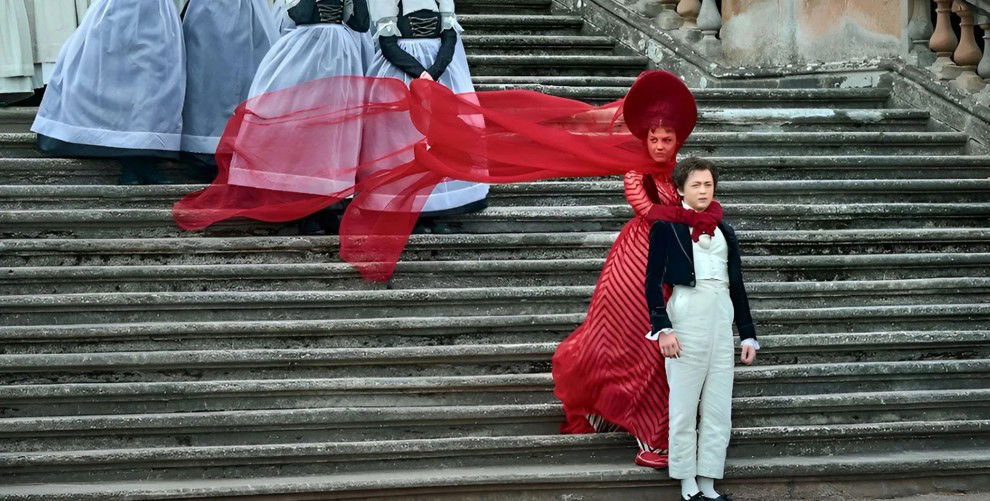About Del Toro’s Frankenstein
There is something inevitable about Frankenstein. Since Mary Shelley, every generation seems destined to resurrect the monster, not out of obsession but out of need. The 1818 novel, born from fear, cold, and a literary wager among friends, was written as a cry against human arrogance. Guillermo del Toro understands this with surgical precision.
In his 2025 Netflix version, the horror is not electrical but emotional. The Mexican director, known for giving monsters souls and aberrations humanity, delivers a film where the most visible stitching is that of feeling.
The story begins with a familiar premise: a scientist defies death and pays the price. But Del Toro’s camera refuses to see the world through the eyes of the creator. Instead, it gives voice to the creature, a being made of fragments who discovers both the weight of the miracle and the burden of immortality. Its first breath is not a triumph but a lament.
Who Is the Real Monster?
Del Toro has always been fascinated by monsters that weep. From Pan’s Labyrinth to The Shape of Water, his creatures are not “the other”; they are the mirror. In Frankenstein, he takes this inversion to its limit. Victor (Oscar Isaac) is the man who creates and abandons, who loves and fears what he has made. The creature (Jacob Elordi), on the other hand, is the unwanted child, a body that learns to be hated before it can understand what it means to live.
The game the film proposes is cruel: if the creator is God, then the monster is proof of His mistake. But Del Toro is not interested in religious morality or scientific terror; he is interested in guilt, the emotion that carries the entire film. Every dialogue between creator and creature seems to beat with the same tragic rhythm: “I gave you life, but I don’t know what to do with it.”
The exchanges between them feel like a Greek duel. No one knows who is hero or villain, only two beings bound by a tie they never chose. The monster does not seek revenge; it seeks meaning. The creator does not seek redemption; he seeks oblivion.

Melancholy as Raw Material
Nothing here is accidental. Every texture, color, and setting reflects the characters’ state of mind. The art direction, both sumptuous and decaying, turns the castle into a tomb, and the snow into a funeral shroud. It is a world already in decay, even before death arrives.
The costume design reinforces the theme of fragmentation: stitched garments, worn fabrics, visible seams. The creature’s body and soul are exposed through the same stitching. Even the sets feel like remnants of something that was once whole, everything collapsing with beauty.
The direction borders on obsessive. Every tiny detail tells a living story. In one scene, a character bleeds from the neck, and in a moment of striking realism, the blood forms two small bubbles as oxygen escapes from the cut trachea. It lasts only a second, but it shows how deeply the director thought about every element.
Del Toro has always filmed pain with tenderness. Here, melancholy feels almost tangible. It seeps into the light, the sound, the framing. The creature, once aware of its life and immortality, carries a gaze that seems to have crossed centuries. Life, once seen as a gift, becomes a curse. Immortality turns into a punishment that makes the creature envy humans, not for their ability to live, but for their ability to die.

Other Versions and the Author’s Vision
Frankenstein has been adapted countless times, from James Whale’s 1931 classic that made Boris Karloff an icon, to Kenneth Branagh’s 1994 expressionist experiment, not to mention the many modern reinterpretations, from philosophical to commercial. Yet few versions have dared to look at the monster with such compassion.
Del Toro does not seek to reinvent the creature; he wants to listen to it. His film does not try to update the myth through technology but through emotion. While contemporary cinema rushes to resurrect franchises and corpses, Frankenstein does the opposite and asks whether life is truly worth beginning again.
This choice brings him closer to Shelley than to Hollywood. In her original text, the creature’s pain was already there; the horror came not from bolts but from awareness. Del Toro simply reopens that wound and lets it bleed, with visual and emotional elegance.

The Horror That Feels
In the end, Guillermo del Toro’s Frankenstein is not a film about creation but about consequences. It is less a scream and more a sigh. The monster exists, but the true terror is being forced to exist.
Few filmmakers capture emotion like Del Toro. He understands that tears can also be a form of awe. And perhaps that is what makes him the perfect author for Shelley’s story: someone capable of stitching together the sublime and the grotesque, the human and the inhuman, until all boundaries disappear.
His Frankenstein is a visual elegy, a poem about living without having asked to live. A meditation on what happens when creation surpasses the creator and leaves him speechless.

Conclusion
In his version of Frankenstein, Guillermo del Toro delivers much more than a typical horror film. He offers something far more disturbing: philosophical and moral questions that linger longer than any jump scare, all while maintaining the classic elegance that defines his career.
A sublime cinematic experience that entertains as much as it provokes reflection on profound philosophical ideas.
And you? Tell me what you thought of the film in the comments.
See you next time!












— Comments 0
, Reactions 1
Be the first to comment